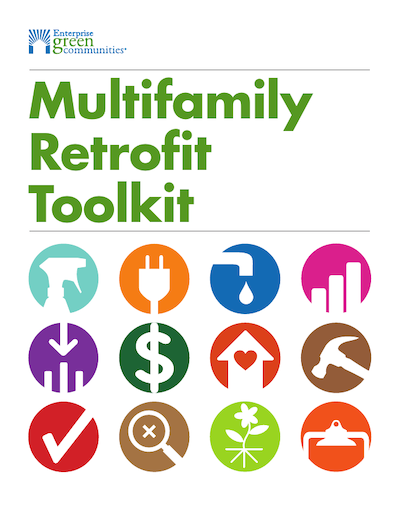Technical Assistance Providers
Technical Assistance Providers
Experts ready to address your affordable housing technical needs
Enterprise Green Communities has vetted consultants in the TA Provider Database to ensure that each organization has the appropriate credentials and a history of delivering high-quality technical expertise. Those listed have demonstrated their continued commitment to bringing sustainable solutions to the affordable housing sector.
Multifamily Retrofit Process
The Step-by-Step Multifamily Retrofit Process
Upgrade existing multifamily buildings with energy-efficient features and systems
Housing preservation, reliable and lower operating costs, improved indoor environmental quality, and reduced carbon emissions: all these benefit multifamily housing properties through retrofit.
Selecting prime candidates for retrofit, aligning funding sources, selecting an audit protocol, ensuring proper implementation, and evaluating results, however, can feel daunting for many portfolio managers. This toolkit distills Enterprise’s experience retrofitting multifamily affordable housing into the critical steps necessary for success. What follows is a roadmap outlining a comprehensive, cost-effiective approach to retrofit for multifamily housing owners, investors, and developers.
How to Use this on-line Toolkit
This step-by-step process can be used in three ways:
- Portfolio Approach - Assists you in developing an action plan to increase the efficiency of your portfolio through selective application of retrofits and related tools
- Project Approach - Assists you in taking one project through a streamlined, cost effective, efficient retrofit process
- Midway through process and/or near completion - Use as a toolkit at any point during the retrofit process in order to make smart and cost-effective decisions
Referenced within the documents are these supporting attachments:
Resident Engagement: Operations & Maintenance
Resident Engagement: Operations & Maintenance
Green efforts continue after construction ends!
These materials will help you teach various audiences how to integrate green and healthy practices into current operations and maintenance practices.
Manual & Maintenance Schedules
Manuals provide the backbone of a property’s maintenance program, reducing re-work, streamlining operations, and providing valuable assistance with staff on-boarding and training. These workbooks are aligned with the key principles of the 2015 Criteria and are designed to ensure that design and construction intentions are codified into operations and maintenance guidelines.
Resident Engagement Manual
Manuals provide the backbone of a property’s resident engagement program. This suite of materials align with the key principles of the 2015 Criteria and allows owners to translate information about the design and construction of their building into a format that engages residents on how to best maintain their dwelling unit and the building at large.
Research & Reports
Research & Reports
Discover new research and practical insights in green building and affordable housing
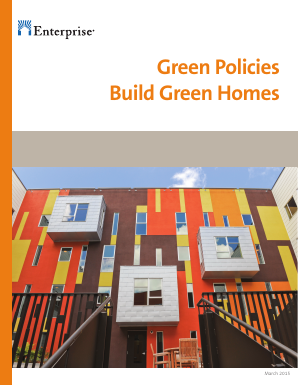
Green Policies Build Green Homes, Green Communities
This report assesses the impact of green requirements on LIHTC allocations with the goal of quantifying the penetration of green building across the affordable housing industry.

2015 Criteria Incremental Cost Survey, Green Communities, Bridgewire Consulting
The purpose of this guide is to provide users of the 2015 Criteria—owners, developers, design professionals, contractors, and others—with industry estimates for the costs of meeting the 2015 Enterprise Green Communities Criteria. For the purposes of this guide, the project team defined incremental cost as the added cost to exceed standard construction practice for the affordable housing industry. It should be noted that this resource is not a cost-benefit guide. All users should consider the positive impacts of meeting the 2015 Criteria and weigh these against the costs estimated in this guide and by professionals working on your project.
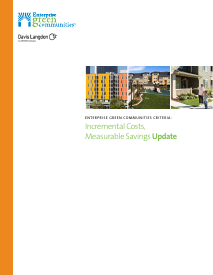
Enterprise Green Communities Criteria: Incremental Costs, Measurable Savings Update, Peter Morris, Yianice Hernandez
This update to Incremental Cost, Measurable Savings report illustrates the cost effectiveness of the Enterprise Green Communities Criteria in delivering health, economic and environmental benefits to developers and residents of green affordable housing. For this latest report, Enterprise partnered with Davis Langdon to complete the analysis on an expanded dataset of 52 green affordable housing developments, up from 27 included in the 2009 report.
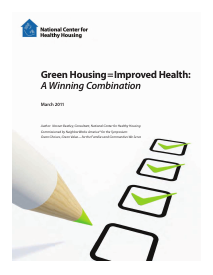
Greener Housing = Improved Health: A Winning Combination: Design and Specifications by Noreen Beatley
This paper provides background on the relationship between housing and health and, using case studies developed by the National Center for Healthy Housing (NCHH), illustrates how building affordable green housing provides health benefits to its low-income residents.
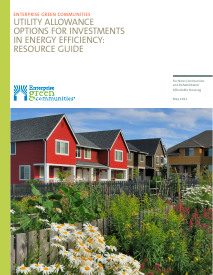
Utility Allowance Options for Investments in Energy Efficiency: Resource Guide by Yianice Hernandez, Julieann Summerford
This resource increases awareness about adopting, establishing, and offering utility allowance options supportive of energy-efficiency investments in new construction and rehabilitation
Case Studies
Case Studies
Enterprise Green Communities Case Studies
- Aspen Street Cooperative: Thirty co-op households in Washington D.C. enjoy the benefits of sustainable, healthy and affordable homeownership.
- Twin Oaks: A transition to all-electric within a moderate rehab scope - coupled with resilient building and operational strategies - positions this development in rural Georgia to thrive for the long run in our changing climate..
- Cadence: This first new construction development to acheive Enterprise Green Communities Plus certification introduced 55 pristine affordable, healthy and comfortable homes for older Americans to Fort Collins, Colorado.
- The Ohringer Building: History and cutting edge efficiency mingle in this beautiful adaptive reuse in Braddock, Pennsylvania
- Liberty 52: Stephen F. Gold Community Residences: 28 new affordable, sustainable accessible homes in Philadelphia, Pennsylvania
- St. Joseph Village: Upgrades completed during the rehabilitation of St. Joseph Village, a senior affordable housing community, in Dyersburg, Tennessee.
- River View Tower: Modernization of high-rise affordable housing for seniors in Chattanooga, Tennessee.
- 26th and Clarksville Phase III: New and affordable low-rise senior apartments in Nashville, Tennesse.
- Thessalonica Court: The Bronx just got a little bit greener.
- Gardenside at the Villages of East Lake: This community in Atlanta, Georgia utilized Enterprise’s Health Action Plan tool to prioritize residents’ wellbeing.
Comparisons
Comparisons
Compare the 2020 Green Criteria with similar resources
2015 and 2020 Criteria Comparison:
Compare the 2020 Criteria to the 2015 Criteria. View the spreadsheet and narrative for a side-by-side criteria comparison.
Other comparisons:
Webinars
Webinars
Archives of recent webinars and other video learning opportunities
2020 Criteria Highlights 1-hour Workshops:
Green Communities Certification Plus Zero Emissions
Enterprise Green Communities introduces Certification Plus Zero Emissions along with other advanced performance updates to the 2020 Criteria.
2020 Criteria in Massachusetts
This webinar discusses the 2020 Criteria as applied to Massachusetts.
NYC Overlay of the 2020 Green Communities Criteria
This webinar discusses the changes to the 2020 NYC Overlay.
2020 Criteria 3-hour Workshops:
Applying the 2020 Green Criteria in Michigan
By the end of the workshop, attendees will have examined the highlights of the 2020 Criteria from the perspective of a Michigan project and will be able to identify resources to assist with certification.
2020 Criteria Ohio Workshop
An online workshop discussing how to move through design and construction to operations with the Enterprise Green Communities Criteria for projects in Ohio.
Applying the 2020 Green Criteria in the Gulf Coast
By the end of the workshop, attendees will have examined the highlights of the 2020 Criteria from the perspective of a Gulf Coast project and will be able to identify resources to assist with certification.



